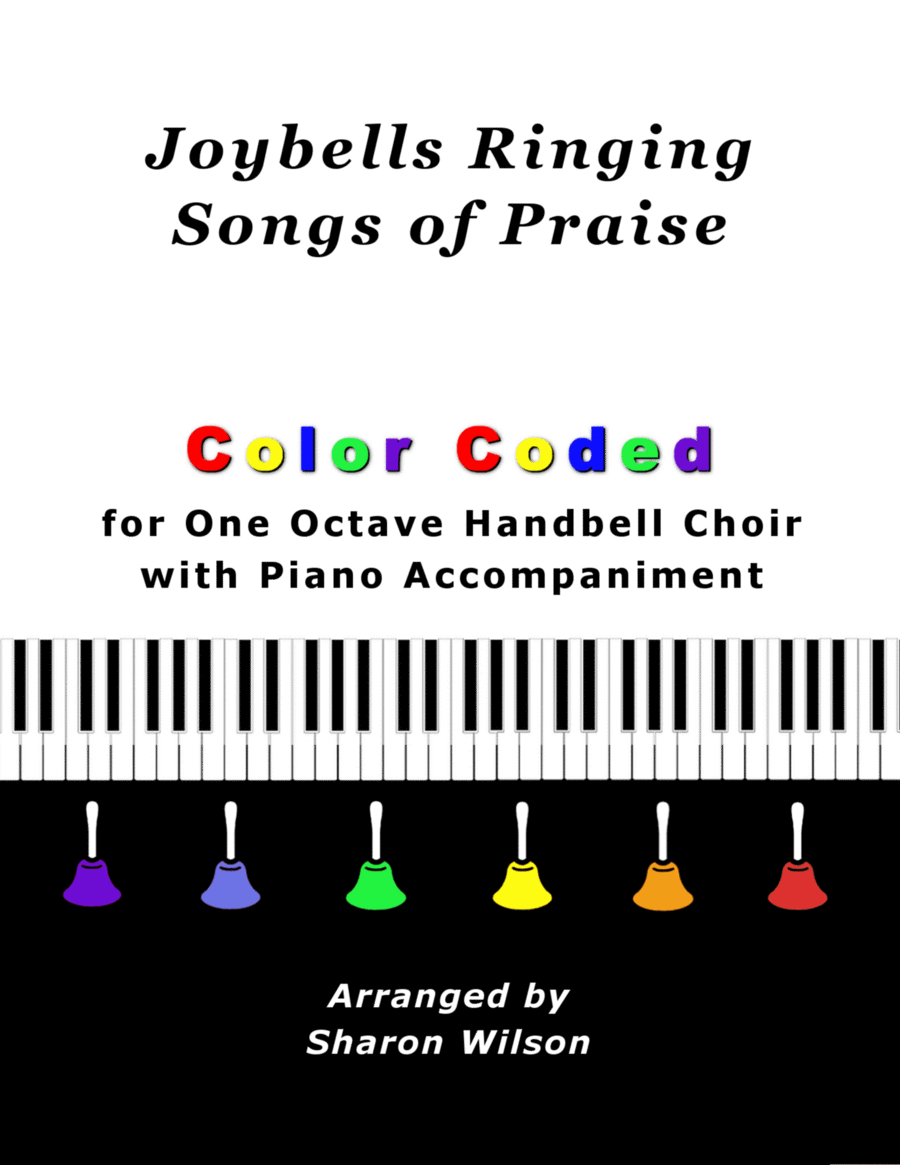Bells,Handbell,Handchime,Piano Accompaniment - Level 1 - Digital Download SKU: A0.1358777 By Sharon Wilson. By African-American Spiritual, Chester G. Allen, Elisha Albright Hoffman, Fanny J. Crosby, Henri F. Hemy, John Bacchus Dykes, Reginald Heber, Robert Lowry, William H. Doane, and William J. Kirkpatrick. Arranged by Sharon Wilson. Children,Christian,Easter,Sacred,Traditional. 96 pages. Sharon Wilson #943238. Published by Sharon Wilson (A0.1358777). This collection contains 10 hymns and praise choruses arranged for a one octave, 13-note chromatic scale Handbell choir with Piano accompaniment. For each song, the Piano provides an introduction then the Handbells play the melody and occasional 2-part harmony. Most songs include an optional repeat and second ending in case a longer song is desired. For each song, there is a combined score with both instruments (Handbells and Piano) on a grand staff plus two separate scores for the Handbells (one in standard format with black and white notes and the second with color-coded notes). If the combined score is more than three pages, a separate Piano only score is also provided.A color-coded note chart is also provided for each song which shows the Handbell notes used as well as the number of times each note is played.  The note distribution is helpful when assigning notes to ringers. You may want to assign fewer notes to beginners or evenly distribute the bells between all ringers. On the color-coded score, only filled noteheads (quarter and eighth notes) are used so the notes are full color and easier to distinguish (this does not indicate the bells need to be silenced immediately before the next beat). Also, only quarter rests are used to help visualize the number of beats per measure. As a reminder for beginning ringers, all sharps and flats are displayed (shown in the key of C) on the color-coded score. As noted above, one of the Handbell scores for each song is color-coded for easier note reading for beginning ringers.  These separate color-coded scores use the Chroma-Notes™ Colored Music System. If you have a set of Handbells with a different color scheme, Chroma-Notes Stick Ons can be purchased and applied so the Handbells match this color scheme. The number of ringers needed will vary depending on the skill level of the participants. For more advanced players, each person could be assigned two or three notes. For beginners, it is best to assign one or two notes to each person. Note assignment suggestions are included for each song and range from 4 to 8 ringers. These familiar hymns and choruses are perfect for small groups and especially beginning ringers. Most songs can be performed with as few as 5 people (4 ringers and 1 piano player). The Piano accompaniment is written for an intermediate player.Permission is granted to make as many copies as needed for one family, church, school, or other performing group. Please purchase additional copies for multiple groups or organizations.Each song is also available separately with accompanying preview pages and audio samples. Song titles included in this collection:   Be Still and KnowFaith of Our FathersHoly, Holy, HolyKum Ba YahPraise Him! Praise Him!Shall We Gather at the RiverThe Lord Is My ShepherdTo God Be the GloryWhat a Wonderful SaviorYou May Have the Joy-bellsVisit Sharon Wilson's website: https://www.SharonWilsonMusic.com/Subscribe to her YouTube Channel: https://youtube.com/@SharonWilsonMusic
